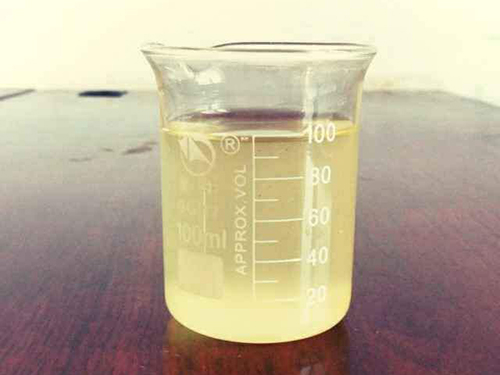1. Flocculant: It can effectively separate stubborn substances from liquids and is often used in processes such as primary sedimentation tank, secondary sedimentation tank, tertiary treatment, or deep treatment, mainly using polyacrylamide. Flocculants can be divided into inorganic flocculants and organic flocculants.
(1) Inorganic flocculants
Low molecular weight inorganic flocculants
The most widely used inorganic flocculants are iron based and aluminum based metal salts. The mainstream inorganic coagulants in the market include ferric chloride, ferrous sulfate, and aluminum sulfate. The commonly used ferric chloride in chemistry is hexahydrate ferric chloride (FeCl3 · 6H20). The characteristics of ferric chloride include good precipitation of alum flowers, better treatment effect for low-temperature or low turbidity water than aluminum salts, and a wide range of suitable pH values. However, the color of the treated water is higher than that of aluminum based water, and it is corrosive. The molecular formula of ferrous sulfate is (FeS04 · H20). The characteristic of ferrous sulfate is that the dissociated Fe2+can only generate the simplest mononuclear complex, which is not as good as the coagulation effect of divalent iron salts. The molecular formula of aluminum sulfate is Al2 (S04) 3. The characteristic of aluminum sulfate is that aluminum sulfate is the most commonly used flocculant in wastewater treatment, which is convenient to use and has good flocculation effect. When the water temperature is low, hydrolysis is difficult, and the formed flocs are loose. Its effective pH range is narrow. The mechanism of action of Mingji (Al2 (S04) 3 · K2S04.24H20) is similar to that of aluminum sulfate.
Polymer inorganic flocculant
Inorganic molecular flocculants have high coagulation efficiency and low cost, making them the most mainstream inorganic flocculants. The types of inorganic polymer flocculants can be divided into cationic and anionic cationic types according to their degree of ion: polyaluminum chloride, polyaluminum sulfate, polyaluminum phosphate, polyferric sulfate, polyferric chloride, polyferric phosphate, polyferrous, etc. There are relatively few varieties of anionic inorganic flocculants, and the mainstream one in 2013 was polysilicic acid.

(2) Organic flocculants: Organic flocculants are divided into ionic and non-ionic types.
Ionic flocculants can change the surface charge of particles and act as bridging chains, causing flocculation. As we often use polyacrylamide (also known as 3 flocculants). Used to accelerate the rapid settling of concentrate in the thickening tank. Thereby reducing the water content of the concentrate and minimizing metal loss. Organic flocculants generally have a relatively large molecular weight, usually reaching tens of thousands, hundreds of thousands, or even millions, so adding a small amount can play a bridging role. Usually formulated into extremely dilute sulfuric acid in the order of 1/10000, with an addition amount of milliliters. Of course, the specific amount of addition still needs to be determined through experiments. Flocculants should not be added too much. After adding too much, the mineral particles that adsorb the flocculant repel each other, breaking the bridging effect and making it difficult to coagulate. In response to the unsatisfactory effect of conventional air flotation treatment, Li Wenlong et al. improved it into a series air flotation process, significantly increasing the removal rate of pollutants. The removal rate of COD increased by 33.4%, S2-47.7%, total Cr 42.2%, SS 15.3%, CN 60.7%, BOD 76.9%, and chromaticity 17.5% compared to before improvement. At the same time, the use of series air flotation technology also achieved the effect of twice air flotation.

Address:No.3 North Haohua East Road, Industrial Park, Neiqiu County, Xingtai City, Hebei Province
Website:www.longkehg.com